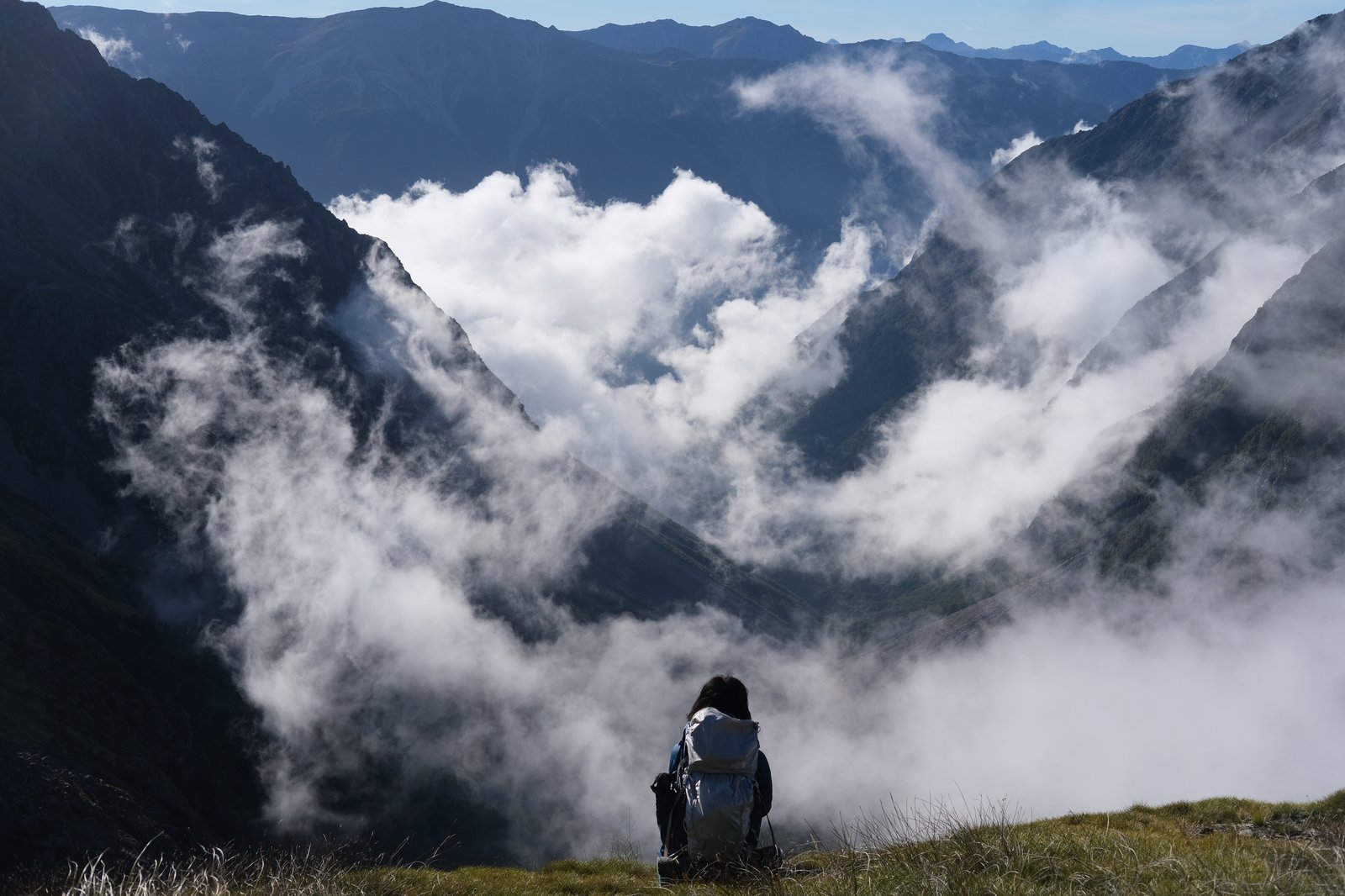Tool sheds and mountain tarns
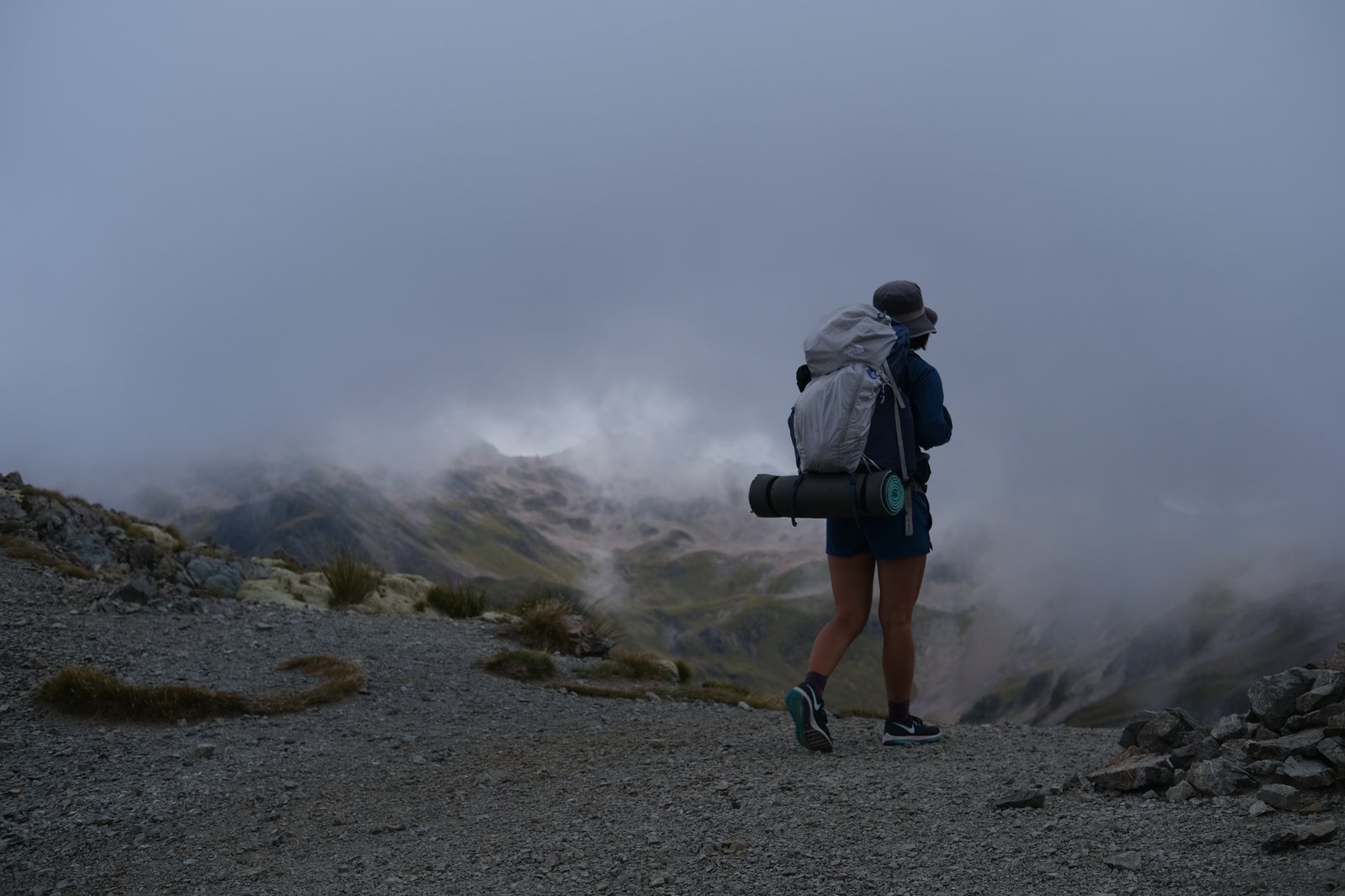
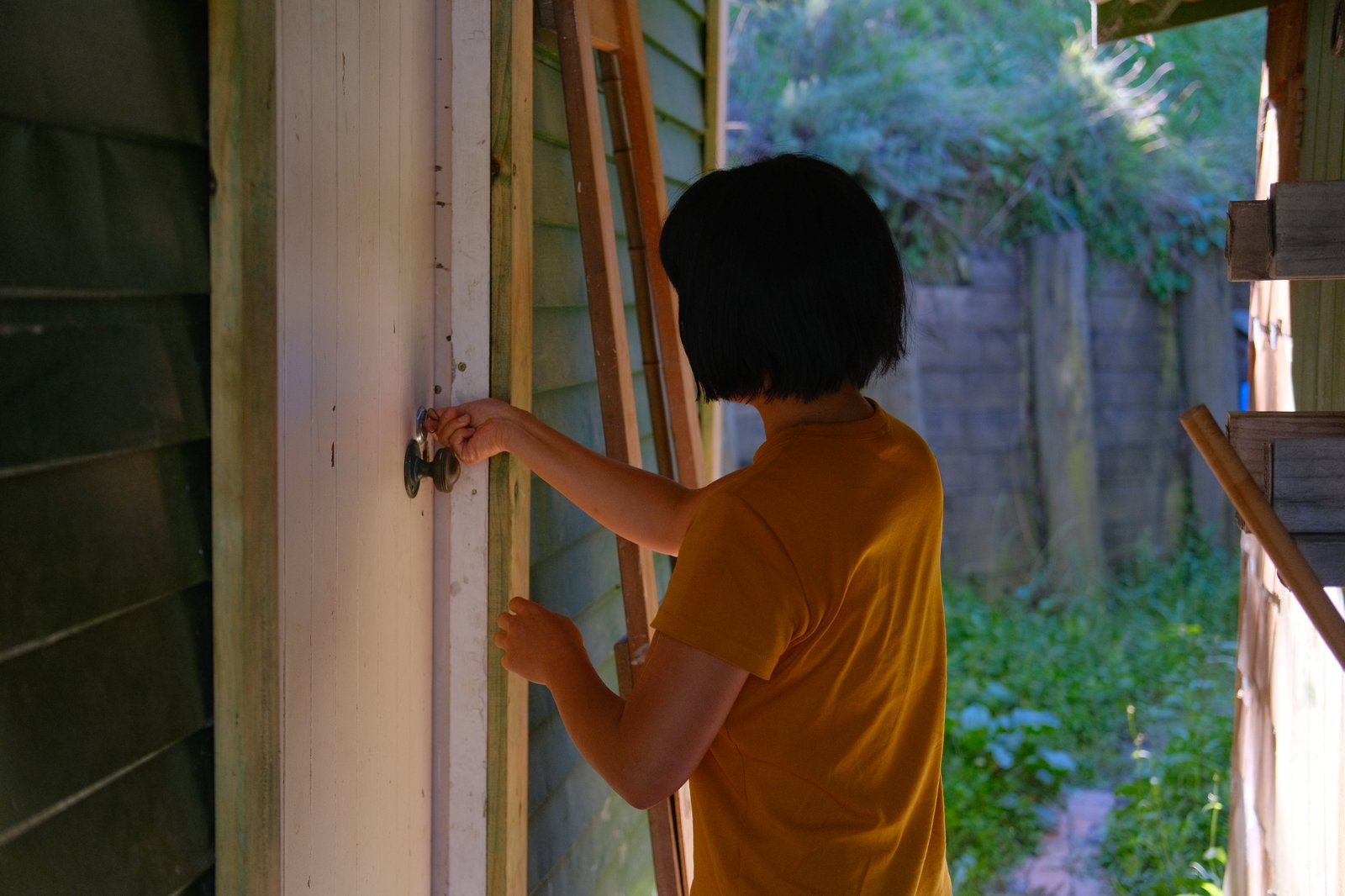
Isobel and I recently drummed up a cool new project proposal (because, of course, the approximately infinite list we already chip away at day by day was in need of expansion 😂). Could we turn the somewhat superfluous (second) tool shed into a compact living space for Mizuki and I? After a quick tour of the bare 1.7x3 metre suite, and a little back and forth, Isobel gave me leave to do as I pleased with the space. The first hurdle was the door, which opened inwards, effectively reducing the space to that of a 1.7m square – not enough for two people to live in. The solution seemed simple, have the door open outward.
After work on Monday I set about this unambiguous, readily achievable goal. It soon proved ambiguous and not readily achievable.
Neville, Isobel’s former partner and the architect of this shed, our new home, has a wonderfully creative and totally bizarre method of building. The door frame was secured in place with a mishmash of wood-screws (Phillips and Robertson types), six inch framing nails, glue, and the weight of the structure that seemed to have been built around it. What I had naively imagined might be a simple case of backing out a few screws, rotating the frame, making a couple of small adjustments, and rehanging the door turned into a handyman’s war of attrition.
A timber facade – secured with six inch long, tightly spaced nails – first needed to be removed in order to get at the door frame itself. By hammering a hatchet between the timbers and the green, metal exterior of the shed and levering with all my weight I was able to gradually pry the timber outwards, remove the hatchet, move it a few inches higher, and continue like this all the way around the door frame. This alone was an ordeal but once completed, only gave way to the next encounter with the spirit of Neville.
The door frame was secured with both nails and screws. The framing nails – embedded beneath the surface of the wood by use of a nail gun – needed to be variously dug out with a chisel, drilled out with a blunt drill bit, or sawed in two by way of a hack saw blade threaded through a gap of a few millimetres between the door jam and the outer frame. The screws were (a little) easier but some had been worn down by repeated use and had to be backed out by (soon blistering) hand, others had been painted over, requiring painstaking de-painting with the business end of a bradawl before forcefully backing them out with a screeching impact driver. The screws securing the hinges were similarly painted over. In order to (finally!) rotate the door frame in place, some small, expected adjustments had to be made by saw and sanding, as the cavity was not quite square.
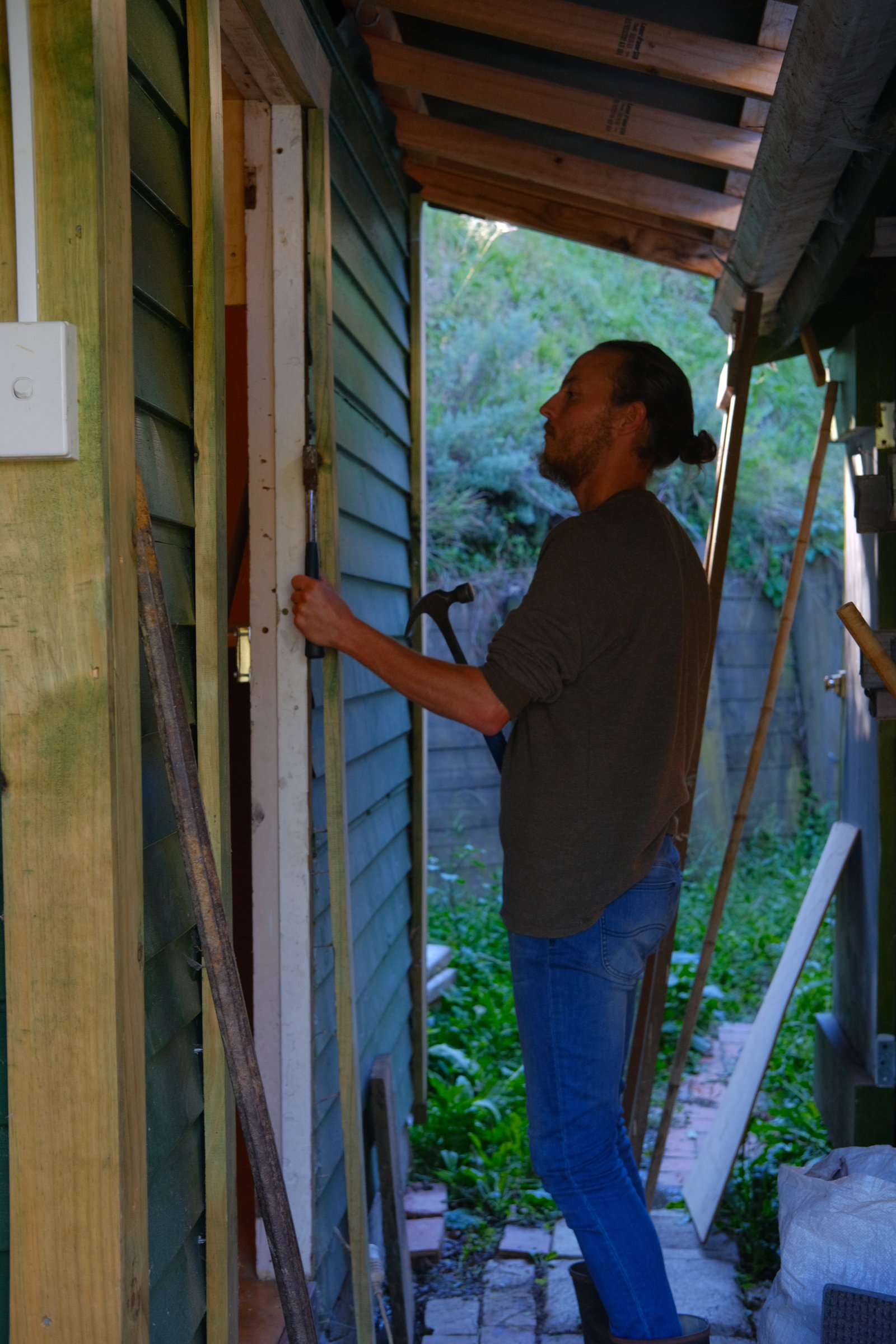
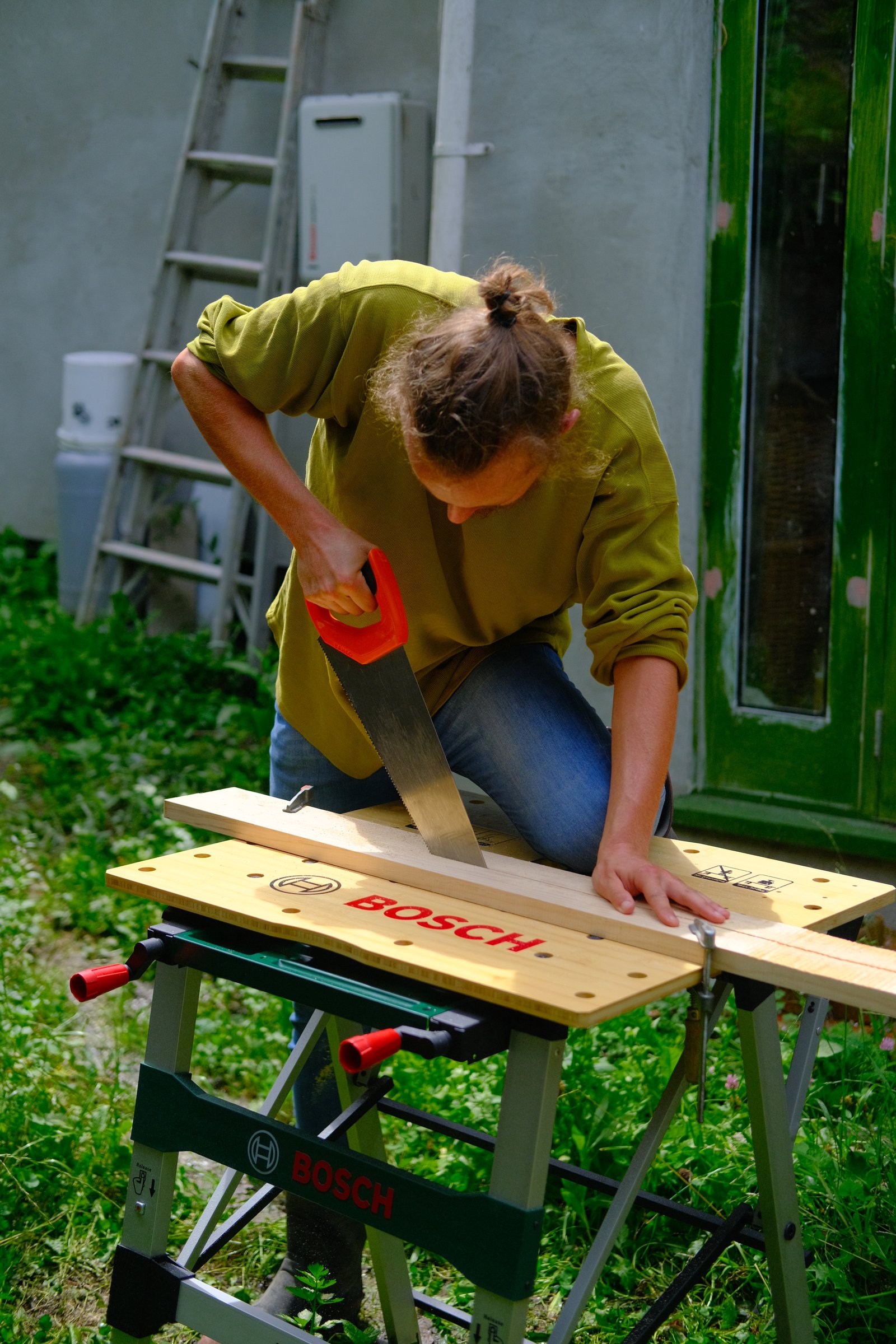
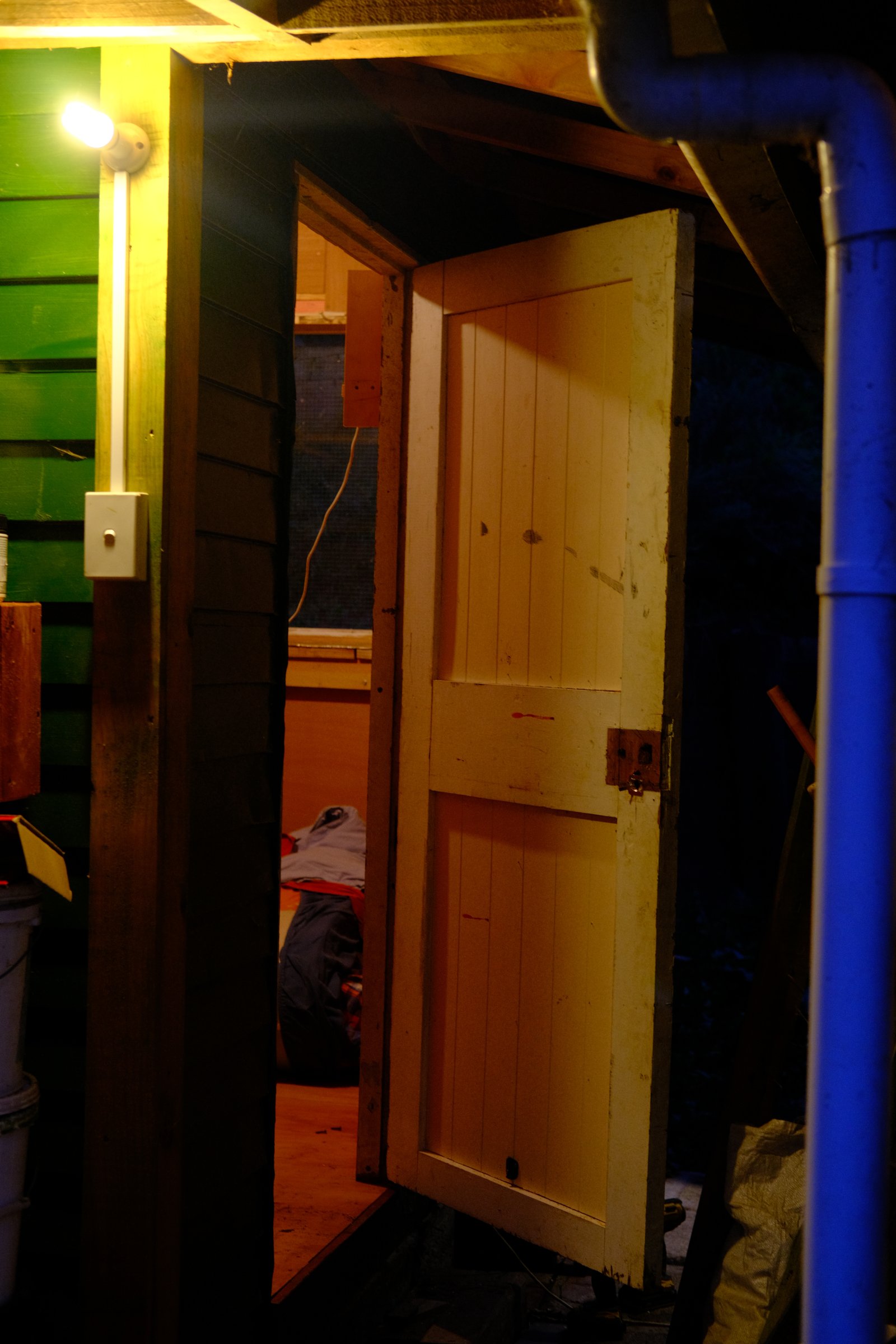
The positioning and type of the lock on the door – and a desire to keep the outer face facing outwards and the hinges in roughly the same place – led me to invert the door (the bottom becoming the top) for rehanging. The hinges needed to be de-painted and removed so that they could be further recessed into the door and matching recesses cut into the rotated door frame – previously the hinges had been fixed to the interior side of the frame where now they would be sandwiched between door and frame, requiring more space.
The final door related challenge was the fact that the latch/lock, which I wanted to reuse, was specifically intended for doors that opened inwards. Thankfully, by opening up the housing, flipping the latch over, and chiselling a snug new catch into the rotated frame, the door was made lockable once again. It wasn’t until the following morning that we discovered it wasn’t un-lockable! Easily fixed though, turns out I’d inadvertently bumped one of the pins inside the housing, blocking its movement. More than four hours all up, but well worth it to release another 2.3sqm, giving us about 5sqm of interior.
Long work days and a mid-week camping trip meant we didn’t pick up the shed project again until the weekend. Saturday’s goal: a bed. After toying with the idea of a fold-out/slide-out day-bed, we’d settled on a mezzanine bed to maximise the available floor space. Being only 170 centimetres wide, and with me being 181cm’s tall, a bed across the room was out of the question. As a result the bed was destined to be a very generous 170cm’s wide and a fairly standard 200cm’s long. This width would present something of a challenge – I wanted the mezzanine to be simple, hopefully not requiring any mid-platform beams or supports as these would limit headroom/space, not to mention require more wood! – but 170cm’s is a wide span and my quick-and-dirty two-lip, full-span mezzanine, while very sturdy, does creek a little when moving about. Not ideal. The plan to solve it depends on a couple of other elements of the build. The desk, storage, and steps below will be holistically conceived to act as support for the mezzanine above and should narrow the unsupported span of the bed to a more reasonable 140-150cm’s.
In the world that allegedly exists outside of the confines of the cabin, Mizuki and I had been itching to go tramping ever since getting back from our three-week tramping trip over the Christmas break. Work, household projects, friends, and the diversion of having a full kitchen at our disposal again have gotten in the way so far but Mizuki’s 32nd birthday weekend seemed like a prime excuse to get away, if only for an overnight. Fran recommended Lake Angelus in the Nelson Lakes, so after a trip to the market, a birthday phone call with mum – Helen and Mizuki share a birthday, I’ve not yet decided whether that’s a curse or a blessing – and a trip to Bobby Franks for a coffee, we headed for the mountains.
Nelson is blessed to be surrounded by four national/forest parks! The Richmond Ranges to the East, Abel Tasman to the North-West, Kahuranghi further to the West, and the Nelson Lakes (our destination) to the South.
By the time we reached the Mount Robert carpark and flung the last few things into our tramping packs it was already nudging 2pm. With apparently six hours of climbing and ridge traversing ahead of us we began the steep climb up the aptly named Pinchgut Track. Mizuki was feeling a little unwell shortly after we set off, so we took it steady and shifted a little weight from her pack to mine. A little snack once we reached the ridge had her feeling better still. The ridge, well above the bushline, offered beautiful views across Lake Rotoiti to the East. We passed a large troupe of young trampers, some of whom were having a case of nerves as they met the occasionally sheer portions of the otherwise broad ridge. We paused at Flagtop, Julius Summit (1794m) came and went, the ridge continued its jagged rise and fall, and a thick cloud-front swallowed us up for a while. Cresting the ridge of the Angelus basin we were greeted by one of the more idyllic hut settings we’ve seen, Angelus Hut sits on a natural land bridge that bisects Rotomaninitua/Lake Angelus. It took us a little under five hours to reach Angelus Hut, but it felt like barely more than two hours.
Very clearly we were not the only weekend warriors snatching a getaway in the mountains, the ranger on duty at the hut informed us that both the hut and the surrounding campsites were fully booked. Not being of the sort to make bookings for our backcountry adventures – and preferring to steer clear of the crowds anyhow – we continued on to Hinapouri Tarn, arguably more beautiful than the already spectacular Lake Angelus, where we joined a friendly few of our unmet frugal familia. As night settled in, gaps began to appear in the rather dramatic clouds and the light of uncountable stars lit the surface of the tarn.
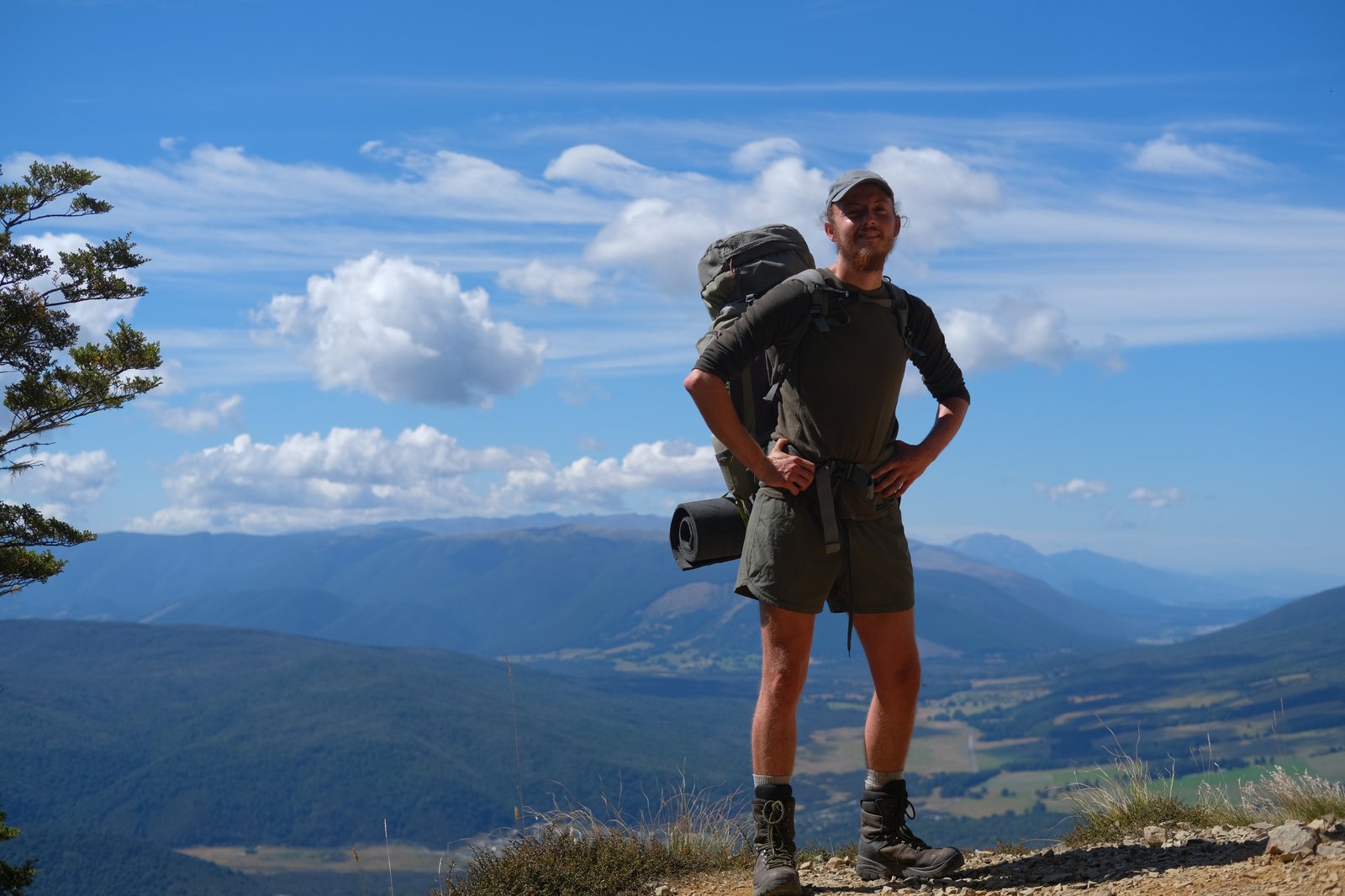
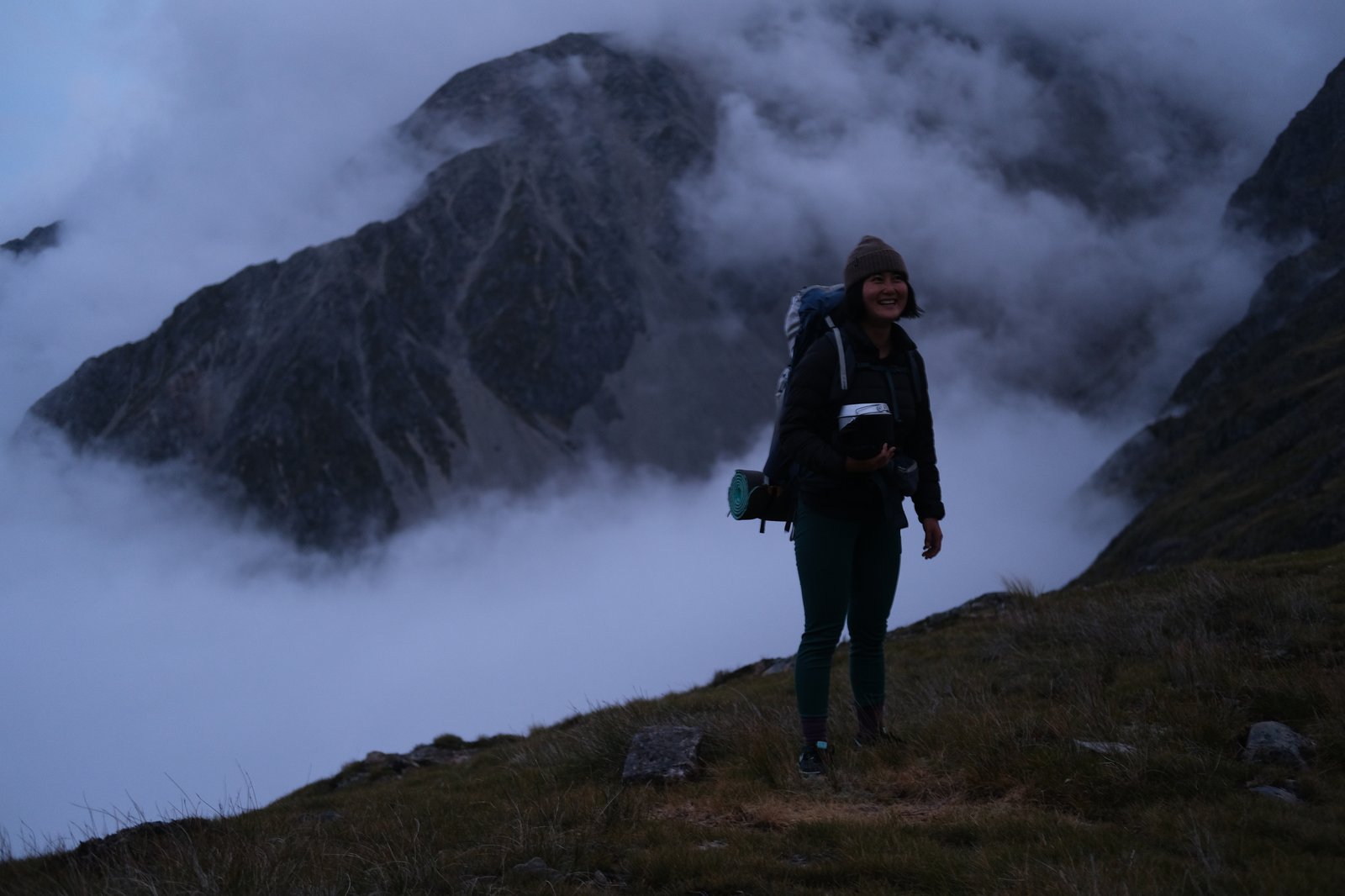
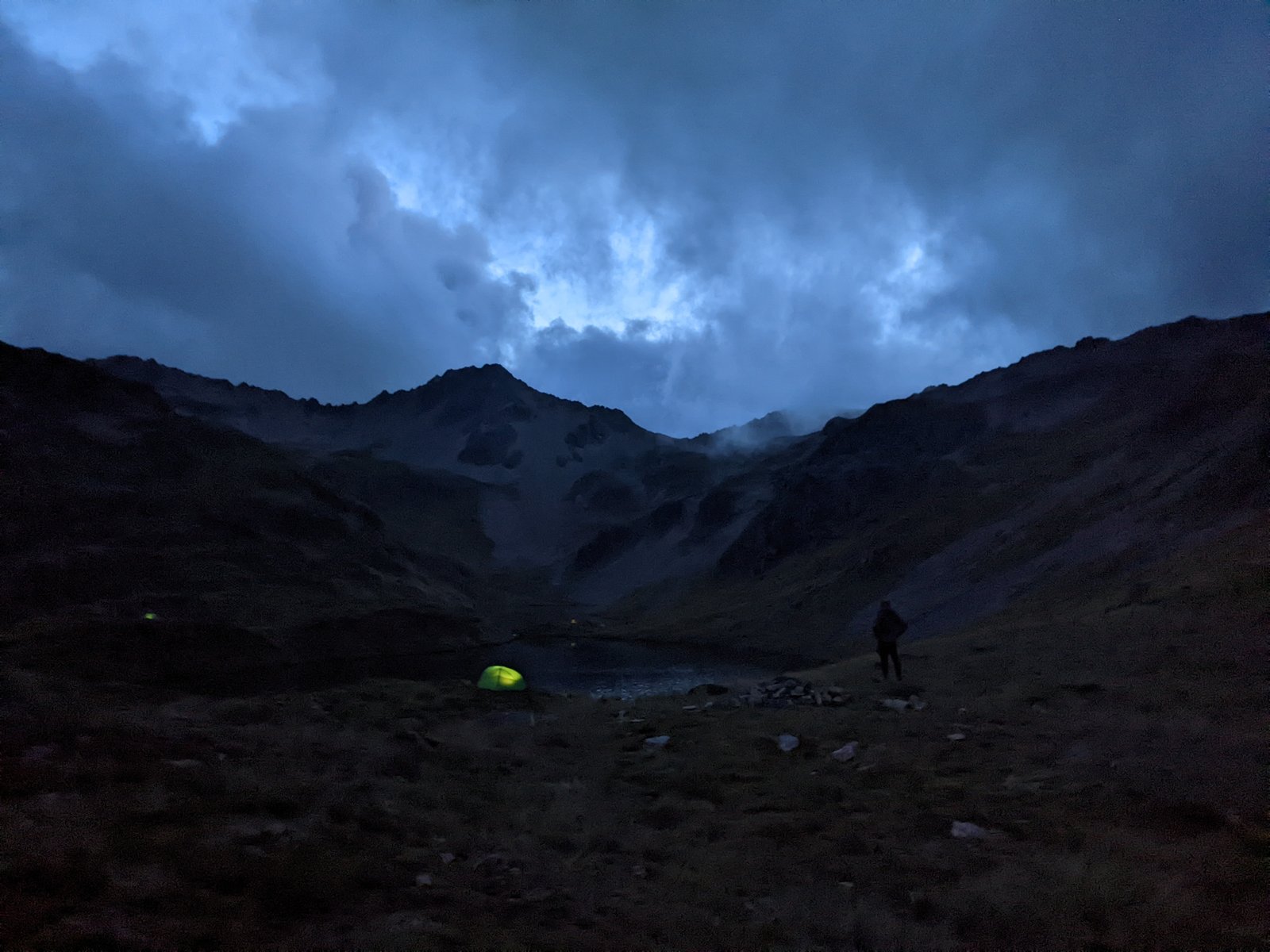
We were in no rush to get off the mountain the following morning. Opening the vestibule around first light we would occasionally prop ourselves up on an elbow and admire the coming of the sun or the clouds curling upwards from the troughs of the valley laid out beneath us, burning off as the temperature climbed, then snuggle back under our covers and snooze a little more.
Preferring circuits over retreats, we made our return via the Te Horowai/Speargrass Creek Route, a mostly steady descent through a valley that begins as scree, becomes a gauntlet of its namesake (speargrass), before giving way to pristine beech forest in the vicinity of Speargrass Hut. The route back took slightly longer than our hike in, such that we arrived back at the carpark almost exactly twenty four hours after departing from it – a pointless but pleasing discovery. More pleasing was the Bellbirds that sang us a near constant chorus all the way through that beech forest.
I should love to return to Rotomaninitua in the winter and see the lake frozen over, as it tends to be from May to October.
